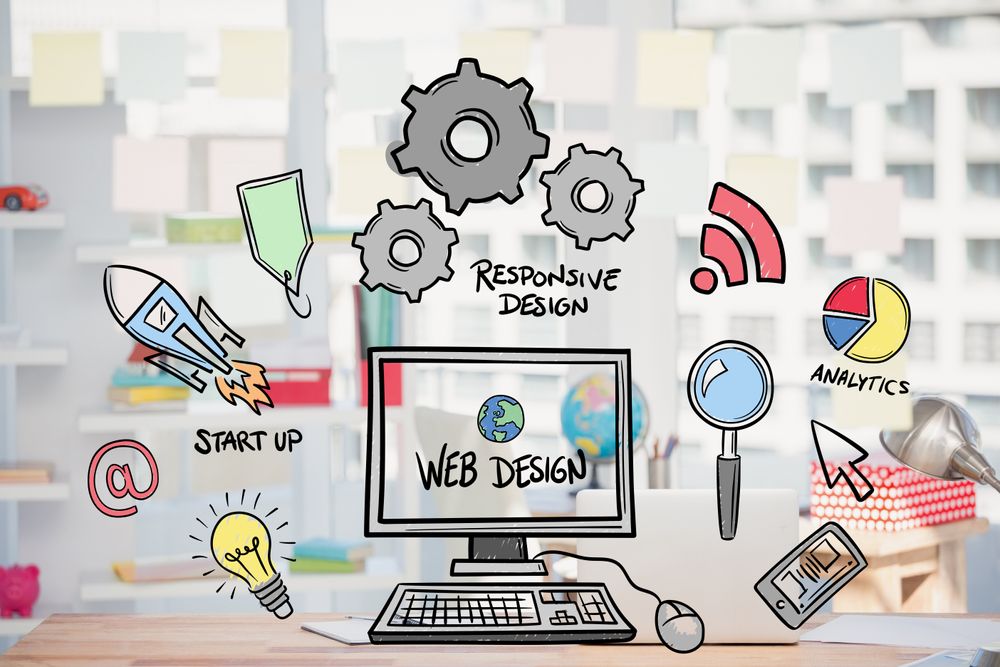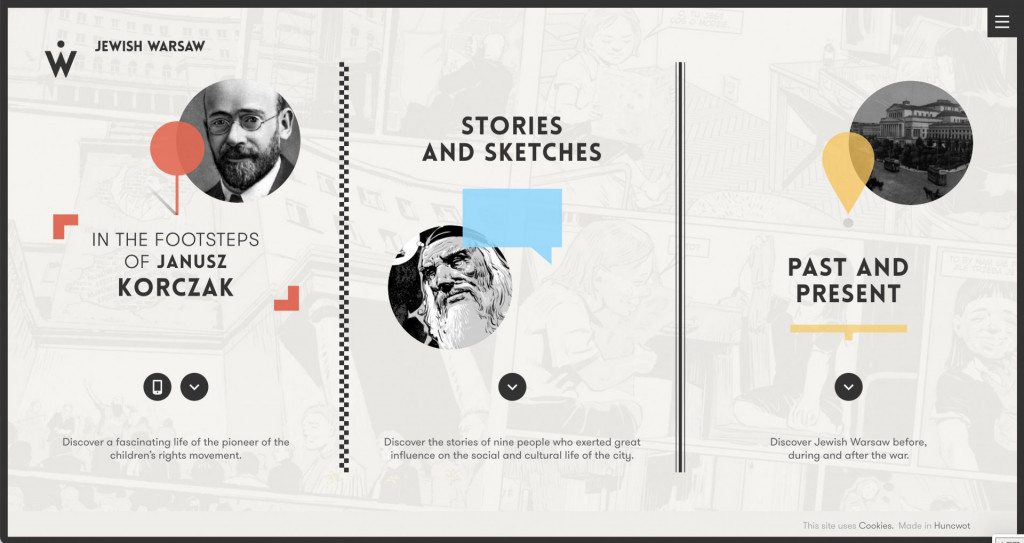Website Design for Small Businesses: Affordable Solutions for Success
Website Design for Small Businesses: Affordable Solutions for Success
Blog Article
Modern Internet Site Design That Catches Focus and Converts
In a significantly electronic landscape, modern-day website style has actually arised as an essential factor in catching user focus and driving conversions. By tactically using visual hierarchy, responsive formats, and engaging interactive components, developers can develop experiences that not only draw in visitors yet also help with significant communications. Reliable call-to-action methods play a vital role in directing users towards wanted results. As we discover these important parts, it ends up being clear that recognizing their interplay can dramatically influence a web site's performance and customer fulfillment. What are the key elements that truly make a distinction?
Importance of Visual Hierarchy
Visual pecking order is a crucial aspect in internet site design, as it overviews customers' focus and enhances their overall experience. By strategically arranging web content, developers can route customers to the most important info initially, thereby enhancing interaction and boosting functionality. Efficient aesthetic hierarchy uses different strategies, consisting of dimension, color, spacing, and comparison. Larger elements naturally draw the eye, while contrasting shades can highlight essential messages, making them attract attention among more restrained parts.
Integrating a sensible circulation in content arrangement is crucial; for example, placing the most vital details at the top of a page cultivates immediate acknowledgment. Moreover, regular usage of typography, such as varying font dimensions and styles, helps develop a clear web content framework. This organization not just aids in navigation however also develops trust fund, as customers feel extra comfy when they can quickly discover what they are seeking.
Inevitably, a well-executed aesthetic pecking order not only enhances aesthetic allure yet also significantly affects user habits. By prioritizing necessary aspects and ensuring a smooth experience, developers can successfully convert visitors right into consumers, reinforcing the significance of this foundational design principle in modern site advancement.
Responsive Layout for All Gadgets
Creating a smooth experience across different gadgets is vital in today's digital landscape, where users accessibility websites from tablet computers, desktop computers, and smartphones alike. Responsive style is an important technique that ensures sites adapt fluidly to various display alignments, resolutions, and sizes. By utilizing flexible grids, images, and CSS media queries, developers can develop designs that keep visual stability and functionality, despite the gadget being made use of.
The relevance of receptive layout expands past aesthetics; it straight impacts user engagement and conversion rates. An internet site that functions well on all gadgets encourages longer brows through and decreases bounce rates, as individuals are more probable to engage with web content that is easy to browse. Search engines, particularly Google, prioritize mobile-friendly websites in their rankings, making receptive layout a crucial element of search engine optimization (SEARCH ENGINE OPTIMIZATION)
Integrating responsive design not just enhances customer experience but also simplifies the advancement process. By producing a solitary site that functions throughout tools, organizations can save time and sources compared to establishing different mobile and desktop versions. Ultimately, responsive style is an essential approach for contemporary website layout, ensuring access and contentment for all customers, despite their device.
Engaging Interactive Aspects
While a responsive style prepares for a practical web site, integrating appealing interactive components is critical for recording user focus and promoting deeper connections. Website Design. Interactive aspects, such as animations, quizzes, and clickable infographics, produce an extra vibrant customer experience, urging site visitors to invest more time on the site
Integrating interactive functions can additionally direct individuals with complicated info, making it simpler to digest material. As an example, interactive sliders can highlight item variants, while ingrained video clips can provide demos or testimonies that reverberate more than static images or message. Additionally, gamification techniques, like benefits for completing jobs or engaging with material, can enhance customer inspiration and retention.
Reliable use interactive components not just enhances the user experience but can also lead to higher conversion rates. By making that site interactions interesting and enjoyable, businesses can grow a sense of loyalty and count on with their audience. It is important to balance interactivity with performance; extremely complicated functions may impede site speed, adversely affecting user satisfaction. Inevitably, incorporating properly designed interactive aspects can significantly elevate a website's efficacy, driving involvement and conversions in today's competitive digital landscape.
Structured Navigating Practices
Reliable navigation is a keystone of any kind of effective website, as it straight affects individual experience and web content availability. Structured navigating practices ensure that users can conveniently find info, boosting their communication with the site. A well-structured navigation menu ought to be straightforward and instinctive, typically featuring a minimal variety of key classifications to prevent overwhelming site visitors.
To achieve structured navigation, developers need to focus on an ordered framework that realistically arranges web content. Implementing breadcrumb routes can supply individuals with context regarding their present place within the website, enabling seamless backtracking. Additionally, utilizing drop-down menus can successfully preserve room while still supplying accessibility to subcategories.
Receptive layout is essential, as navigating needs to be functional across all tools (Website Design). Mobile users, in certain, take advantage of touch-friendly menus and retractable sections that keep functionality without jeopardizing looks

Effective Call-to-Action Approaches
A well-crafted call-to-action (CTA) is important for leading customers towards desired results on a website, as it motivates them to involve with material or buy. To maximize their effectiveness, CTAs should be clear, compelling, and purposefully positioned throughout the site.
First, utilize action-oriented language that connects necessity or value, such as "Get Started," "Join Now," or "Claim Your Price cut." This language not only encourages individuals but likewise establishes clear assumptions about the following actions.
2nd, consider design aspects; CTAs should stick out aesthetically with contrasting colors, adequate whitespace, and prominent positioning. A switch that is easy to see and click rises the possibility of user communication.
In addition, individualizing CTAs based upon user habits or demographics can dramatically enhance interaction. Customized messages resonate much more with individuals, driving higher conversion prices.

Conclusion
These parts collectively boost customer experience, making sure that visitors stay engaged and inspired to explore web content even more. By prioritizing these layout concepts, organizations can significantly improve individual retention and conversion prices, inevitably leading try here to greater success in the electronic landscape.
In an increasingly electronic landscape, modern web site layout has arised as a critical variable in catching individual focus and driving conversions.Visual power structure is a crucial aspect in site layout, as it guides individuals' interest and boosts their general experience.The significance of receptive style extends beyond visual appeals; it straight affects user involvement and conversion rates.Including responsive design not just boosts individual experience but also improves the advancement process. Eventually, responsive style is a fundamental approach for modern internet site style, guaranteeing ease of access and satisfaction for all users, regardless of their tool.
Report this page